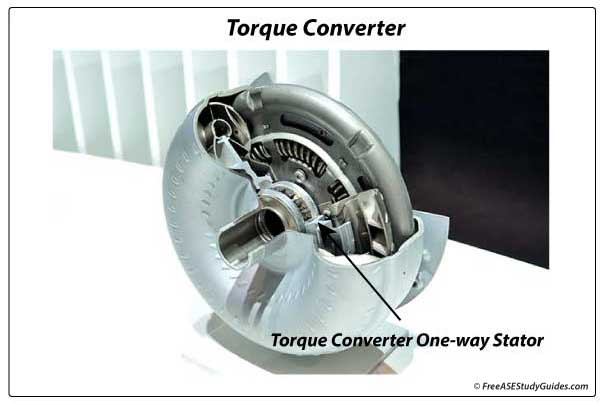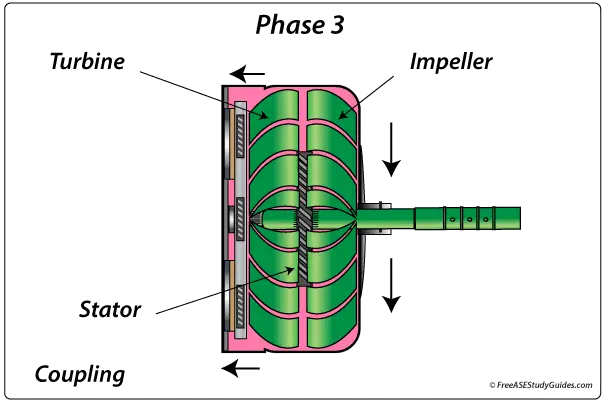Torque Converter Stator

The stator clutch is inside the vehicle's torque converter. It's critical to the torque converter's operation and the vehicle's overall drivability. During low-speed operation, the stator locks, creating a vortex. The redirected flow assists the impeller, resulting in torque multiplication. The stator remains locked until the torque converter reaches its coupling phase.

The coupling phase is a point in the torque converter's cycle where the turbine (attached to the transmission) reaches 90% of the impeller's (attached to the engine) speed. At this point, there is no more torque multiplication because the stator is allowed to spin freely. The stator's overrunning clutch enables the stator to spin freely in one direction while keeping it from rotating in the other.
If the stator's one-way clutch spins freely at low speeds, there will be a loss of torque multiplication, resulting in poor low-speed performance. On the other hand, if the stator's clutch freezes up and remains locked continuously, the vehicle suffers poor high-speed performance.
This problem results in overheating of the torque converter and quickly turns the converter's hub dark blue. A little blue discoloration around the hub is considered normal, but dark blue/black is not.
To diagnose the one-way clutch, place the torque converter on the bench and use your fingers to rotate the stator inside of the shell. It's splined and should spin freely in one direction and lock in the other. A faulty clutch rotates freely in both directions or is locked in both directions.